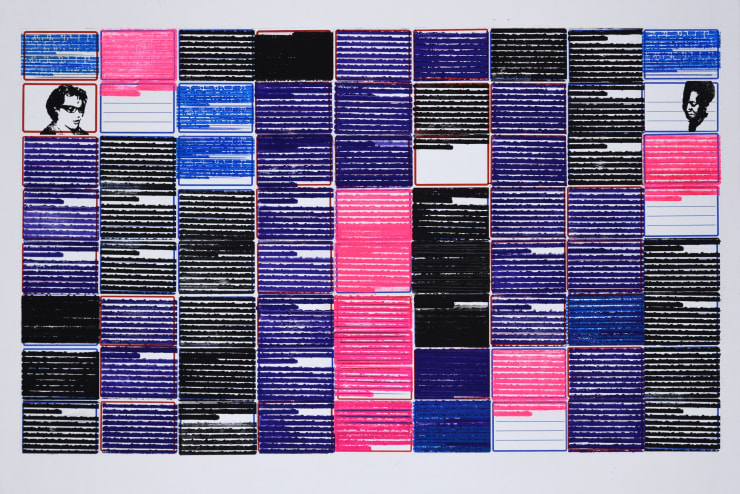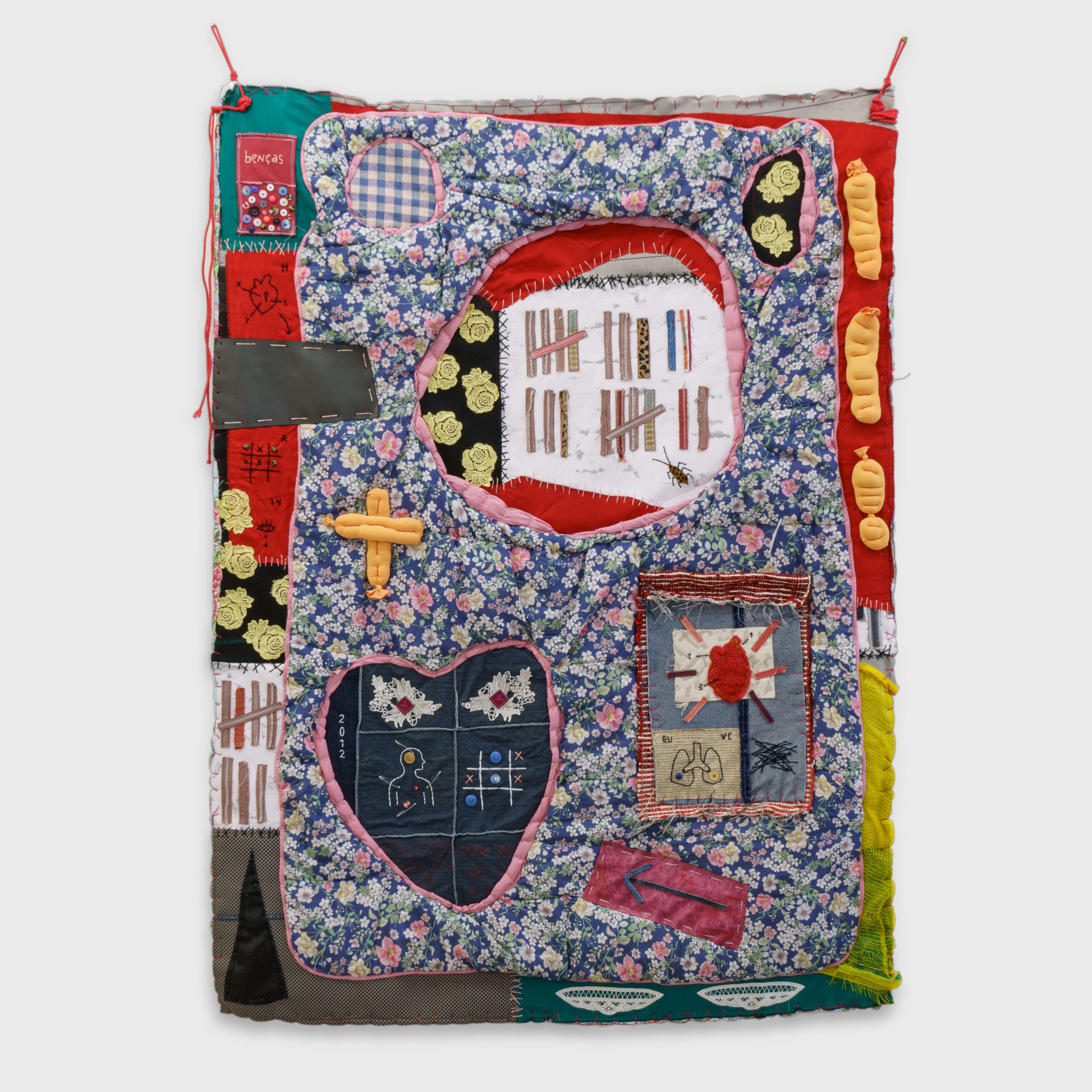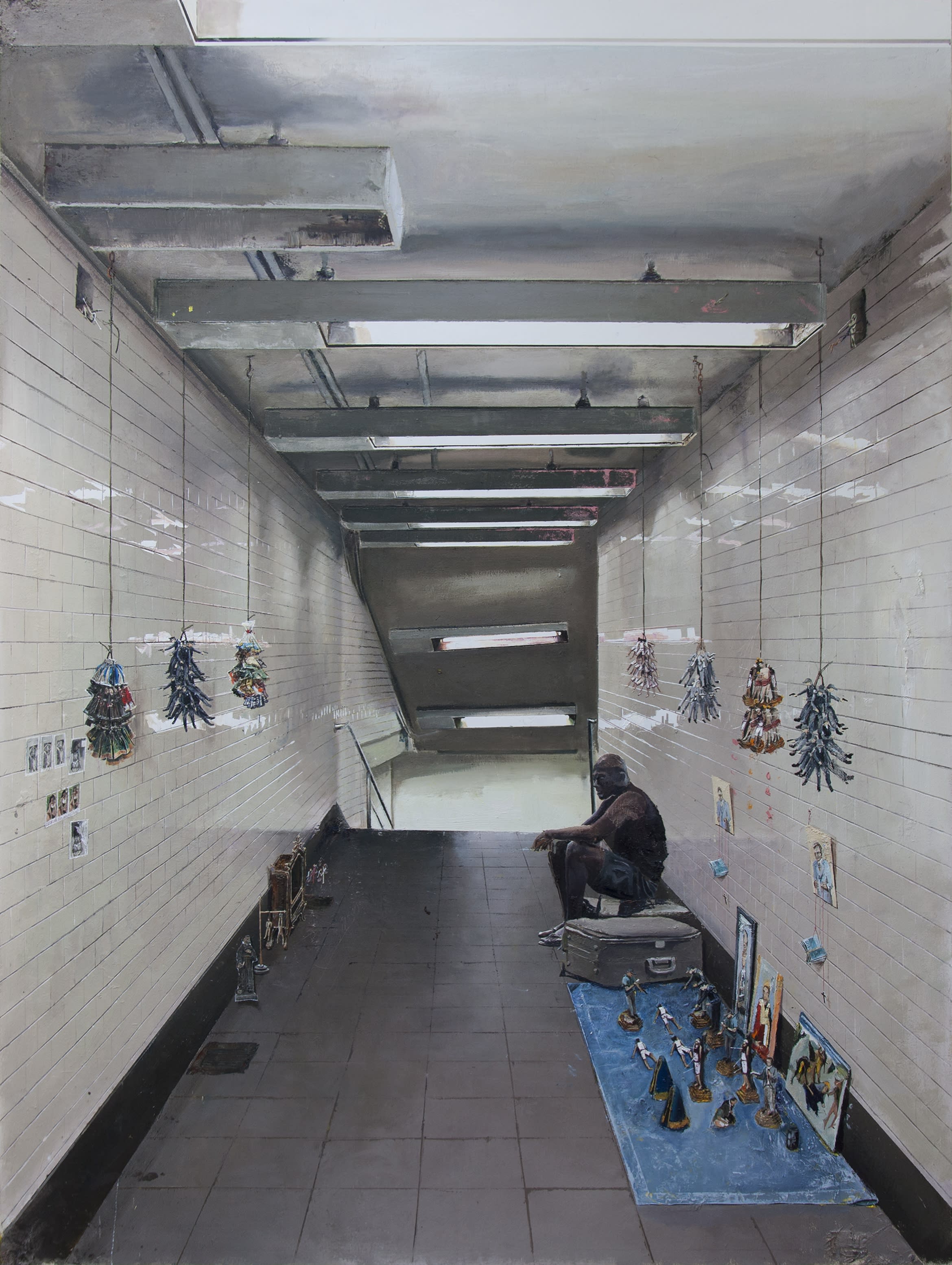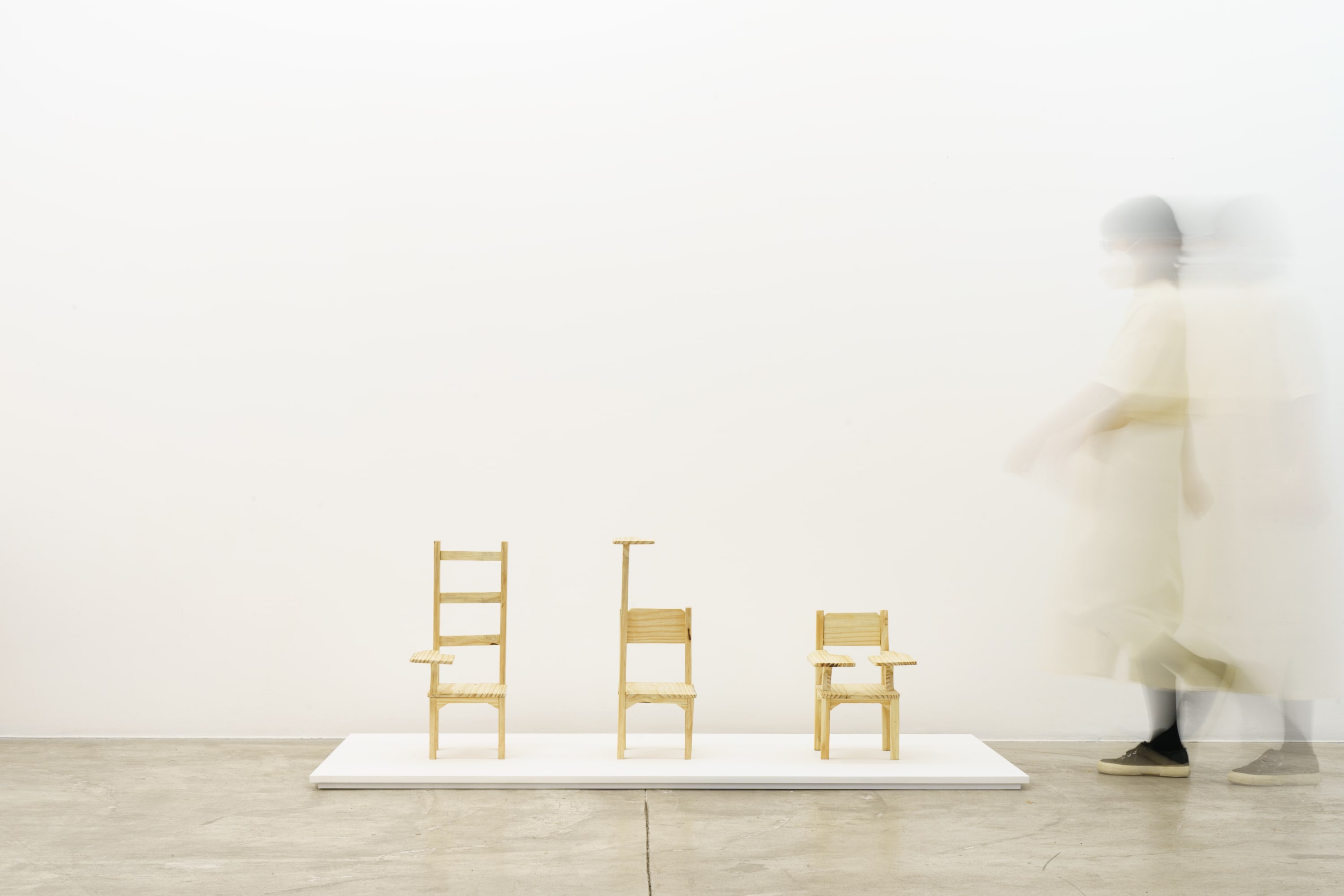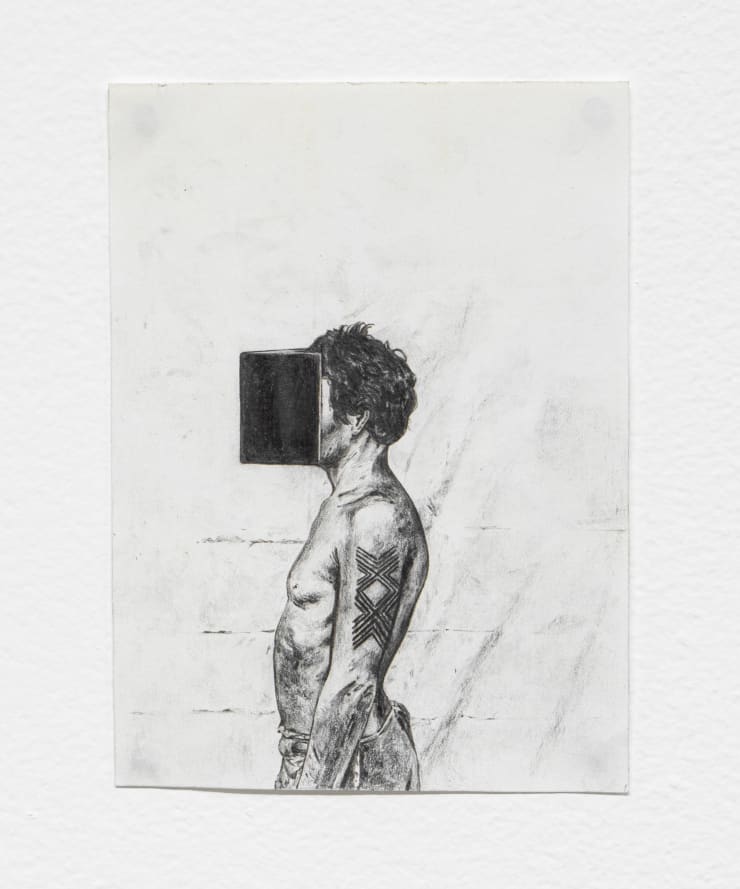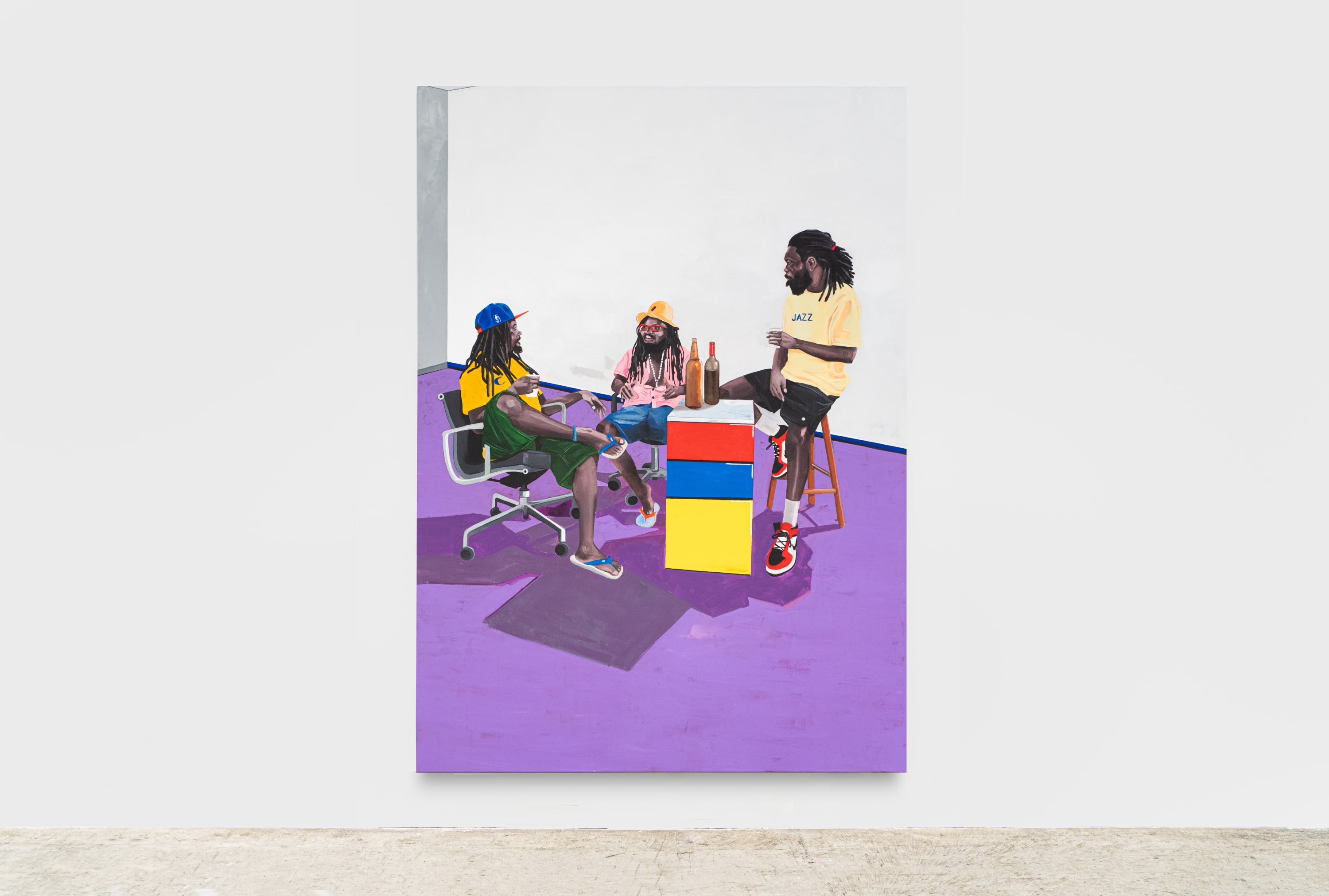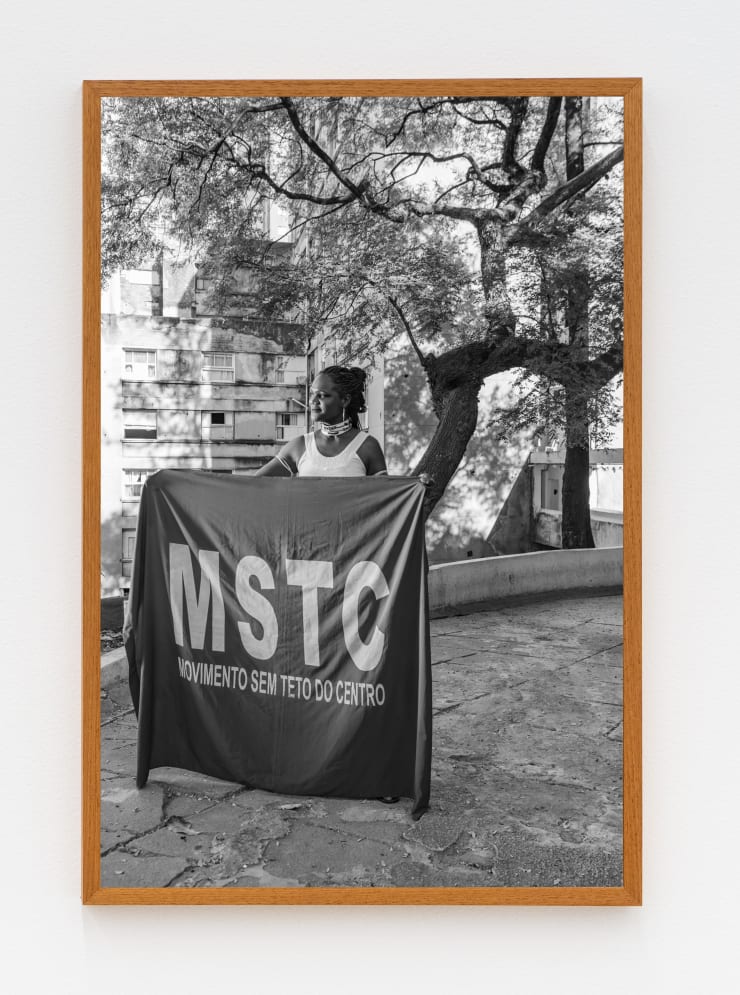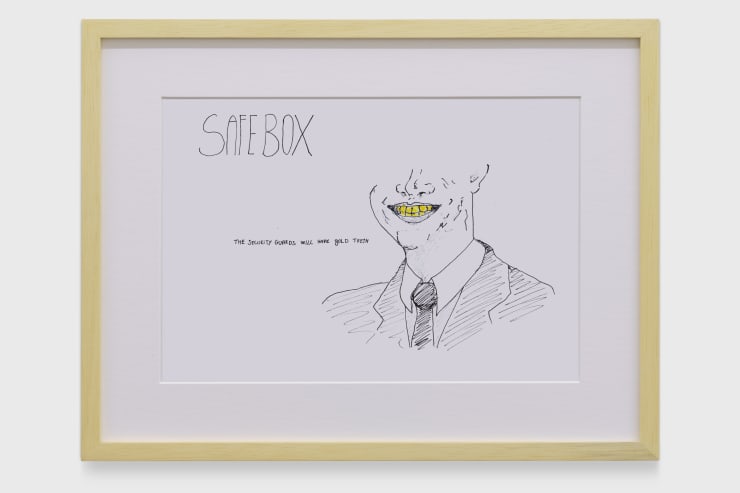-
on the shoulders of giants
curated by raphael fonseca
june 24 – august 20, 2021
nara roesler new york
-
-
Nara Roesler New York is proud to present On the Shoulders of Giants, a group exhibition curated by Raphael Fonseca, one of Brazil’s most acclaimed emerging contemporary art curators, opening on June 24 2021.
On the Shoulders of Giants showcases Brazilian artists from different generations, whose practices investigate the relations and tensions between ideas of time and memory. The works presented delve into an ample array of propositions on these themes, proposing different aesthetic and conceptual interpretations. The exhibition foregrounds contemporary engagements with popular and ancestral narratives, exploring how they coexist and intertwine with modern day contexts, in hope of developing collective memory.
-
on the shoulders of giants
text by raphael fonsecaIt is necessary to admit failure: I don’t recognize the past, and I don’t believe in the future. But my feet are in a hurry because by making mistakes, I learn more.
These two sentences appear at the end of Doom, a video by Randolpho Lamonier and Victor Galvão included in the exhibition. The words caught my attention due to the way in which they articulate the past, present, and future: not recognizing the past does not mean ignoring it, and not believing in the future does not negate that something is yet to come. In distrusting these two extremes, it is better to admit our anxiety and bet on the present and on our mistakes.
On the shoulders of giants brings together works by artists who have created juxtapositions of those historical periods that have been crystallized in Western thought; however, in contrast to that stipulated in the aforementioned quote, some of the artists gathered in the show easily recognize the past and/or deposit their belief in the future. What unites them all is the fact that the images they create flirt with anachronism; individual and collective memory can emerge from leaps, reminiscences, and oblivion.
The Latin maxim ‘nanos gigantum humeris insidentes’, commonly attributed to the birth of cathedrals and universities in the Middle Ages, points to the fact that in order to learn something, we need to put ourselves in dialogue with and listen to the past, and to the ‘giants’ that came before us. Some of the artists presented, work with the notion of the archive, listing and rethinking the figures that are present in collective memory and that are considered idols. Conversely, some others ask themselves, once standing on the giant’s shoulder: to what extent should this giant be considered one? When it comes to anti-fascism, beheading the giant must be an option.
Other artists gathered in this show cast their eyes on the protagonists of private sphere narratives: family and ancestral narratives are perceived as learning beacons. Education, orality, and transmission of knowledge between generations are central to many pieces that work to value anonymous individuals in the general public, whose names may be much more relevant than any bibliographic reference. These giants—sometimes superficially seen as peripheral and subaltern—are the ones who effectively guide a large part of the exhibition’s artists.
Whether through painting, using archival images, video, or exploring the relationship between image and word, we must remember what our initial quote says: ‘by making mistakes, I learn more.’ That means experimentation is what guides how each of these artists chooses their giants and stands on their shoulders. Their paths are never pre-determined and their journeys, each with different rhythms, are more about listening than verbiage.
Therefore, the exhibition invites the public to share in the celebration of the ephemerality embedded in this presentation, while the artists take short breaks from their constant trips aboveground and beyond the limits between yesterday, today, and tomorrow.
-
-
ALAN ADI
Alan Adi's work investigates new forms of occupying space, through the use of a wide variety of media. The artist recurrently engages with the ways in which different visual cultures shape certain notions of cultural, regional or even national identity. The work displayed in this exhibition captures the artist's long-standing research on the relationship between images and Brazil's Northeast region as a man-made idea/invention, notably using the accordion as a symbol of the region's popular culture and identity. The work interweaves narratives related to migration, to prejudice against the region, and how it has often been invigorated by the Southeast Region, while also offering a tribute to Brazilian popular music.
-

Alan Adi
Sanfona sentida II, 2020
installation
42 x 285 x 76 cm | 16.5 x 112.2 x 29.9 in -
-
GABI BRESOLA
The relationship between images and words is at the center of Gabi Bresola’s production, particularly in the realm of publications. The artist was born and raised in Joaçaba, in the interior of Santa Catarina, in southern Brazil. With her parents being farmers, Bresola's work engages with the differences between her family's experiences, and her own, addressing the strangeness of being a visual artist amongst her relatives. In Nostalgia europeia no novo mundo, which translates to European nostalgia in the new world, the artist creates an incisive encounter between postal cards originating from European cities and their 'corresponding' cities in the Brazilian state of Santa Catarina (often established under the same names), founded by immigrants. To what extent is it possible to transpose European visual culture and identity to the new continent? To what extent do these cities' names and the desire to forge a new Europe in South America, contribute to the racism in this state?
-

Gabi Bresola
Nostalgia europeia no novo mundo, 2020
postcards printed in 240g offset on acrylic display -
-

Gabi Bresola
Nostalgia europeia no novo mundo, 2020
postcards printed in 240g offset on acrylic display
2 pieces of 10 x 15 cm | 3.9 x 5.9 in -
-
GUSTAVO CABOCO
Gustavo Caboco's work often engages with his knowledge of the Wapichana people, indigenous native Brazilians who live in the Canauanim community, in Cantá, Roraima, where his mother was born. Born and raised in Curitiba, the artist has learned about his origins through his relatives, progressively reframing his own identity as a person and artist. Through drawing and painting, he proposes images where the human body is twisted, fragmented and transformed into several other elements. The narratives in his works are permeated with ideas of transformations and tend to invite the public to reflect on their own ancestry. These ideas are notably present through the title of the series on view, as well as through the paintings' figures: bodies in “handstand” position, standing upside down, connecting with the ground, with their roots.
-

Gustavo Caboco
“a lágrima da paisagem ancestral” series, 2020
white pen on paper
10 pieces of 29,7 x 21 cm | 11.7 x 8.3 in -
-
-
LEILA DANZIGER
Over the past three decades Leila Danziger has been developing a body of work that engages with archives, libraries and images generally collected from within her family. Thus, her work is often centered around her family's immigration from Germany to Brazil in the early 20th century. The work included in this exhibition, is derived from a photo album from the artist's mother's graduation as a teacher—her lifelong career—from which she created a series called Pesquisa escolar [School Research]. Using labels commonly found in stationery shops, the work presents an atlas of people who have been essential to education, but have often been overlooked as such, including figures such as Martin Luther King, Carolina Maria de Jesus and Beyoncé. The assemblage also includes figures who have had a nefarious effect, and who were particularly important during the artist's primary education, notably presenting figures related to the military dictatorship in Brazil.
-

Leila Danziger
Alda, Dalva, Carolina # 2, from pesquisa escolar series, 2021
stamp (graphic ink) on label and cardboard
50,5 x 76 cm | 19.9 x 29.9 in -
-
-
RANDOLPHO LAMONIER (AND VICTOR GALVÃO)
Randolpho Lamonier's research generally uses elements considered cheap, such as pieces of fabric and plastic objects. Through sewing, the artist creates flags/banners constructing narratives that can be perceived as prophecies about the future, as well as reflections on his previous experiences growing up in the industrial city of Contagem, in Minas Gerais, Brazil. The works presented in this exhibition reveal the artist's perspective in a more abstract way, including a work made of fabric and covered with cheap objects sewn onto it, as well as a video produced in partnership with Victor Galvão, in which both share anxieties about the future through a narrative constructed using stop motion technique.
-

Randolpho Lamonier
Minha vó me ensinou a agulha como metáfora do perdão, from Do pouco que eu sei series, 2021
ropes, silkscreen, sewing,
embroidery and painting on fabric
218 x 160 cm | 85.8 x 63 in -
-
Randolpho Lamonier and Victor Galvão
DOOM, 2021 [fragment]
video, full HD, color, stereo sound
4’55”
-
-
ANDRÉ GRIFFO
André Griffo's visual research is focused on painting and its historical relations with the representation of architecture. Distancing himself from explicit political discourse, the artist invites the audience to pay attention to small details woven into his images, addressing the violence that has given rise to narratives about different visual cultures and their remnants.
-

André Griffo
O fim condizente com o começo 3, 2021
oil paint on canvas
177 x 223 cm | 69.7 x 87.8 in -

André Griffo
O vendedor de miniaturas 2, 2021
acrylic and oil on canvas
177 x 133 cm | 69.7 x 52.4 in -
-
ANDRÉA HYGINO
With research centered on printmaking, Andréa Hygino created a series of works that reflect on both her and her mother's relationship with education, as teachers. Throughout the artist's life, Hygino has continuously paid special attention to the table and chairs used by her mother to hold private classes in their home. With this in mind, she conceived works that use schooling furniture and its surfaces as woodcut matrices, transposing the many traces of past usage, the students' engravings, and with this, the layers of time, onto paper. The exhibition also includes a more recent work, whereby the artist reimagines the design of student chairs, positing questions about their function—what if their configurations were to, in some cases, prevent rather than incentivize conventional forms of teaching? What limits are embedded in the furniture, and what are the privileges underlying the use of such furniture?
-

Andréa Hygino
Ambidestra, from Protótipos Inadequados series, 2021
pinus wood
40,2 x 29 x 31,7 cm | 15.8 x 11.4 x 12.5 in -
-

-
-
FILIPE LIPPE
Filipe Lippe collects photographs, all of which share the characteristic of being charged with historical aspects: war, images of politicians, state meetings, inaugurations, public speeches. Along with this, the artist is also motivated by an interest in images that document people considered anonymous—his own family, black people enslaved during the 19th century in Brazil, photographs of different native peoples from Brazil. Based on his great capacity to reproduce imagery through his drawings, the artist proposes new images drawn from this archive onto which he executes small interventions so as to pervert the initial documentary function of the photographs. New stories are therefore written, erased and exhibited before the public.
-
-
ADRIANO MACHADO
Adriano Machado's work engages with the relationship between image, memory, family and fiction. In his recent video titled Fé e Mistério, notably presented in this exhibition, we follow the artist's father as he makes an iron tool that resembles a spear. Having spent some time with his father in his workshop, Machado produced a series of objects that experiment with wood and iron. The resulting devices were not envisioned for use, but rather meant to embody his attempts, his errors and the unpredictability in his experience and in his production, as an individual learning from, and admiring the work of his father.
-

Adriano Machado
Instrumento utópico 01, 2021
bronze and cast iron
3 x 6 cm | 1.2 x 2.4 in -
Adriano Machado
Fé e Mistério, 2014
video, color, HD, 16:9
2’14”
Courtesy of the artist, Galeria Nara Roesler and Galeria Kogan Amaro.
-
-
NO MARTINS
Over the last years, No Martins has produced a series of striking paintings that engages with both our society's structural racism and the artist's own engagement with the anti-racist movement. In his new series titled Encontros políticos [Political Encounters], the artist presents images of black people talking and interacting with each other in public spaces such as beaches and metropolitan areas. Depicting the simple act of being together, talking and transmitting knowledge through speech, Martins foregrounds before the public eye the political power of encounters.
-

No Martins
Untitled (Series: Encontros Políticos), 2021
acrylic paint on canvas
280 x 200 cm -
-
VIRGINIA DE MEDEIROS
In the series Alma de bronze, Virgínia de Medeiros pursues her characteristic research on marginalized communities, through living, socializing and exchanging with people from different social groups, and with different existential desires and methods of survival. Notably, the artist participated in the residency Ocupação Hotel Cambridge and joined the Movimento dos Sem-Teto do Centro [Downtown Homeless Movement] led by Carmen Silva Ferreira. With this, de Medeiros befriended the feminist leadership of the Frente de Luta por Moradia [Battle for Housing Front], following which the artist made a series of portraits of the women residing at Ocupação 9 de Julho. Notably, the last of these portraits is shown in the exhibition, where Carmen is depicted with her entire family. Their facial expressions reveal their confidence in the battle for housing and the lasting nature of this engagement as it recruits the family's future generations.
-

Virginia de Medeiros
Carmen Silva Ferreira, Guerrilheiras, from Alma de Bronze series, 2017
inkjet print on Hahnemühle Photo Rag 308
90 x 60 cm | 35.4 x 23.6 in -
-
-
MARTA NEVES
Humor and critical viewpoints on the arts system in Brazil are constant elements of Marta Neves' production. In her series titled Não-ideias [Non-ideas], the artist produces and raises banners that instill narratives of failure in the exhibition space or in the public space. Her works often include names of unknown individuals as a means of encouraging the audience to reflect on who the people may be, why their “ideas” failed, or were not executed, and what their next steps might be or might have been. In Éden, Neves brings together the vernacular language of family photography with the temporality of video, allowing us to dive into the nuances of relationships that are normally left out of the picture.
-

Marta Neves
From NO IDEA series, 2020
hand painted banner
unique + exhibition copy
70 x 500 cm | 27.6 x 196.9 in -
-
AMADOR E JR. SEGURANÇA PATRIMONIAL
Amador e Jr. Segurança Patrimonial’s practice is a duo/company, whose production is characterized by performance pieces that engage with the intersections between performance and physical, or professional work. The piece thus raises the following questions: how does the public react upon realizing the security guards designated to protect the integrity of works of art in the exhibition are in fact, the artists themselves?
Alternatively, the artists' drawings, which include both what has already been presented as performance and what is yet to be performed, come to occupy a space archive and project, between past and future.

















